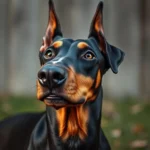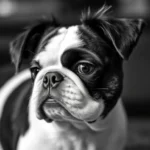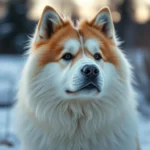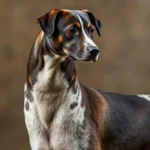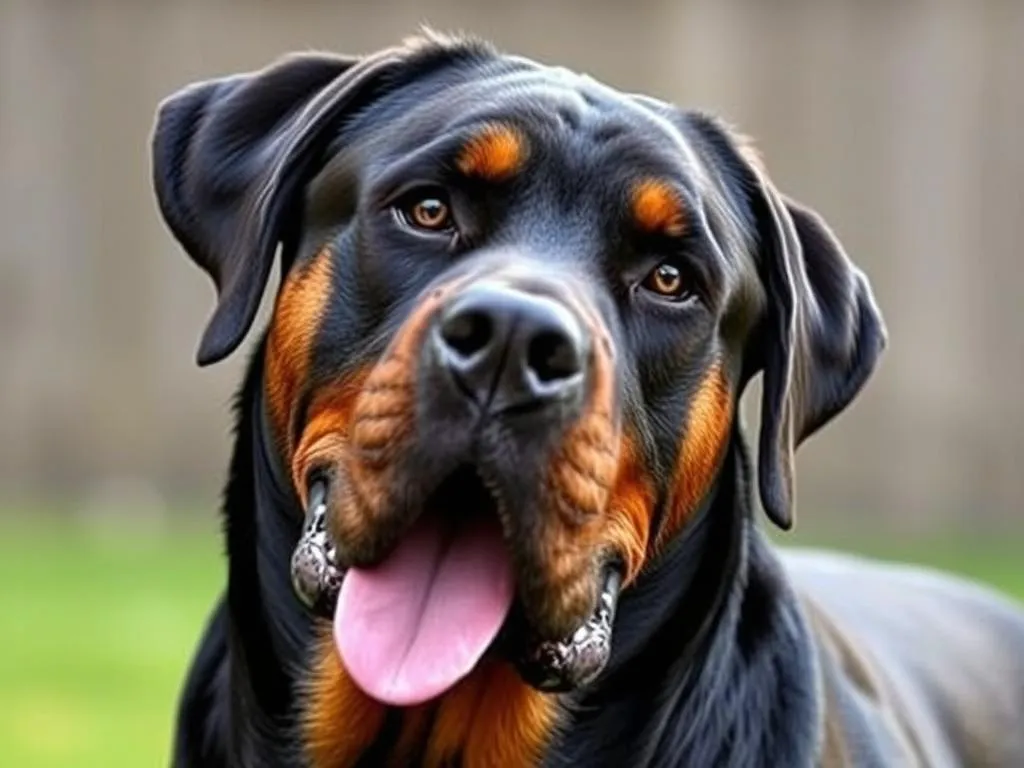
Introduction
Mixed dog breeds have become increasingly popular among dog lovers, offering unique characteristics and traits that can appeal to a wide range of owners. Understanding the nuances of each parent breed is crucial for prospective pet owners, especially when considering a mix like the Rottweiler Great Dane mix. This combination brings together the strengths of two powerful and beloved breeds, resulting in a dog that is both impressive in size and admirable in temperament. In this article, we will delve into the origins, characteristics, care needs, and behavior of the Rottweiler Great Dane mix to help you determine if this breed is the right fit for you.
Understanding the Parent Breeds
Rottweiler
The Rottweiler is a breed steeped in history, originally bred in Germany for herding and guarding livestock. Their robust build and protective nature made them excellent working dogs. Today, Rottweilers are known for their loyalty, intelligence, and versatility, serving in various roles such as police dogs, service animals, and loving family companions.
Key Characteristics:
– Size: Rottweilers are large dogs, typically weighing between 80 to 135 pounds and standing about 22 to 27 inches tall at the shoulder.
– Temperament: They are confident, courageous, and often aloof with strangers, making them natural protectors.
– Health Issues: Like many large breeds, Rottweilers are prone to certain health issues, including hip dysplasia, elbow dysplasia, and heart conditions.
Common Uses: Rottweilers are not only used for working purposes but are also cherished for their companionship, loyalty, and protective instincts.
Great Dane
The Great Dane, known as the “gentle giant,” has a history that dates back to ancient times, initially bred to hunt large game. Despite their imposing size, Great Danes are known for their friendly, affectionate nature, making them excellent family pets.
Key Characteristics:
– Size: Great Danes are among the largest dog breeds, often weighing between 110 to 175 pounds and standing 28 to 34 inches tall.
– Temperament: They are friendly, affectionate, and good-natured, often getting along well with children and other pets.
– Health Issues: Great Danes can face health challenges, including bloat, hip dysplasia, and certain heart conditions.
Common Uses: Apart from being loving companions, Great Danes also serve as therapy dogs and family guardians due to their gentle yet protective nature.
The Rottweiler Great Dane Mix
Overview of the Mix
The Rottweiler Great Dane mix combines the best traits of both parent breeds. This mix tends to be large and powerful, boasting a unique appearance that often varies based on genetic influence from each parent.
Description: The mix often inherits the muscular build of the Rottweiler along with the tall stature of the Great Dane, resulting in an impressive dog. Their coat can vary, typically being short and smooth, and colors can range from black, fawn, brindle, or a combination of these.
Typical Temperament and Behavior Traits: Expect a mix that is loyal, protective, and friendly. They tend to be good with families and may display a gentle demeanor, though early socialization is critical to ensure they grow up to be well-rounded dogs.
Physical Characteristics
- Size Range and Weight: The Rottweiler Great Dane mix can weigh anywhere from 80 to 150 pounds, with heights ranging from 24 to 34 inches depending on which parent they take after more.
- Coat Types and Colors: The mix usually has a short coat that is easy to maintain. Coat colors may vary widely, including combinations of fawn, brindle, black, and tan.
- Potential Health Issues: Being a large breed mix, they may inherit health issues from both parents, such as hip dysplasia, heart problems, and bloat. Regular veterinary check-ups are essential.
Temperament and Behavior
General Behavior Traits
The Rottweiler Great Dane mix is known for its friendly and loyal disposition. They generally exhibit the following behavior traits:
- Socialization Needs: Early socialization is crucial. Exposing your puppy to various people, pets, and environments will help them grow into a well-adjusted adult dog.
- Interaction with Families and Children: This mix tends to be good with children, showing a protective nature while remaining gentle. However, supervision with younger kids is recommended due to their large size.
- Compatibility with Other Pets: With proper socialization, they can get along well with other dogs and pets. However, early introductions and training are essential to ensure harmony in multi-pet households.
Training Requirements
Training a Rottweiler Great Dane mix requires commitment and consistency:
- Importance of Early Training and Socialization: Begin training and socialization as early as possible to prevent behavioral issues later on.
- Recommended Training Techniques: Positive reinforcement is the most effective method for this mix. Use treats, praise, and play to encourage good behavior.
- Common Behavioral Issues and Solutions: Issues such as excessive barking or jumping can be addressed with consistent training and mental stimulation. Providing adequate exercise will also help reduce hyperactive behavior.
Health Considerations
Common Health Issues
The Rottweiler Great Dane mix can inherit genetic predispositions from both parent breeds. Common health concerns include:
- Hip and Elbow Dysplasia: Both breeds are prone to joint issues, so regular veterinary check-ups and maintaining a healthy weight are crucial.
- Bloat: This life-threatening condition is more prevalent in larger breeds. Feeding smaller, more frequent meals can help reduce the risk.
- Heart Conditions: Regular veterinary screenings can help detect issues early on.
Lifespan and Aging
The average lifespan of a Rottweiler Great Dane mix is typically between 8 to 12 years. As they age, it’s important to monitor for signs of health problems, including changes in appetite, energy levels, and mobility.
Care and Maintenance
Nutrition
Providing proper nutrition is essential for the health of your Rottweiler Great Dane mix:
- Recommended Diet: A high-quality dog food that meets their nutritional needs is crucial. Look for options that are specifically formulated for large breeds.
- Portion Control and Feeding Schedule: Portion control is vital to prevent obesity, a common issue in large breeds. Feeding twice a day instead of free-feeding can help manage their weight.
Exercise Needs
Regular exercise is vital for this energetic mix:
- Daily Exercise Requirements: Aim for at least 60 minutes of exercise each day, which can include walks, playtime, and training sessions.
- Recommended Activities: Activities such as fetch, agility training, or even swimming can provide both physical and mental stimulation.
Grooming
Grooming needs for the Rottweiler Great Dane mix are relatively straightforward:
- Grooming Frequency Based on Coat Type: Their short coat requires minimal grooming, but brushing once a week can help reduce shedding and keep the coat healthy.
- Tips for Maintaining Hygiene and Health: Regular dental care, nail trimming, and ear cleaning are essential for overall hygiene.
Living Conditions
Ideal Environment
This mix thrives in environments that offer space to roam and play:
- Space Requirements: While a house with a yard is ideal, they can adapt to apartment living if provided with enough exercise and stimulation.
- Importance of a Secure, Safe Environment: A securely fenced yard is recommended, as their protective instincts may lead them to patrol their territory.
Family Compatibility
The Rottweiler Great Dane mix can be a wonderful addition to various family situations:
- Suitability for Families with Children: This mix is generally good with children, making them suitable for families. However, supervision is advised to ensure safe interactions.
- Considerations for First-Time Dog Owners: While they can be a great match for first-time owners, it’s important to be committed to training and socialization efforts.
Conclusion
The Rottweiler Great Dane mix is a striking and loyal companion, combining the best traits of both breeds. With their protective nature and gentle demeanor, they can make excellent family pets. However, it’s essential to understand their needs regarding training, exercise, and health care to ensure a fulfilling life for both the dog and their owners.
Owning a Rottweiler Great Dane mix is a commitment that comes with rewards, as these dogs are known for their loyalty and affection. If you are considering adding this mix to your family, ensure you are prepared to meet their needs for a happy and healthy life.
FAQs
What is the temperament of a Rottweiler Great Dane mix?
The Rottweiler Great Dane mix typically has a friendly, loyal, and protective temperament. They are good with families and children but require early socialization.
How much exercise does this mix need?
This mix needs at least 60 minutes of exercise daily, including walks, playtime, and mental stimulation activities.
Are Rottweiler Great Dane mixes good with children?
Yes, they are generally good with children, but supervision is recommended due to their large size.
What health issues should I be aware of?
Common health issues include hip and elbow dysplasia, bloat, and heart conditions. Regular veterinary check-ups are essential for early detection.
How do I train a Rottweiler Great Dane mix?
Use positive reinforcement techniques, begin training early, and ensure consistent socialization to address common behavioral issues effectively.
